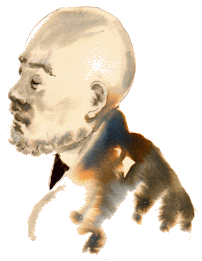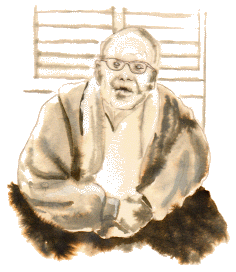When Japanese poets heard Westerners were writing haiku, most were either indifferent or thought the impossible was being attempted; a few became intensely curious. The vast majority of Japanese haijin still believe that a haiku must contain a kigo, or approved "season word" taken from a hallowed almanac. Poets in the West have no comparable resource. Since kigo intimately reflect life in Japan, to try to take them over would inevitably result in a pointless pastiche.
But there are different schools of haiku in Japan — traditionalists, modernists, avant-gardists. To begin with, Western writers were in thrall to traditionalists, but influence of other schools is growing.
|
|
Shiki Masaoka (1867–1902)
Shiki had a mission to save Japanese haiku from decadence. He established haiku as the generic name and, professing to be inspired by Western art, advocated "realistic sketches from life ... of things as they are". This advocacy has been criticised in the West as licensing "bland nature notes without existential depth". (Ken Jones)
| |

|
Tohta Kaneko (1919–)
Today's "grand old man" of haiku in Japan kicks against the traditions. "Everything under the sun can be a subject of haiku. I cherish non-seasonal as well as seasonal words. Moreover, there is an inevitable problem of 5-7-5 rhythm. I am trying to create a unique vision of modern haiku as poetry." Tohta foresees an opportunity for a stagnating medium in Japan to benefit from contact with Western innovation.
|
 | |
| | |
|
|
bank clerks in the morning
fluorescent
like squid | | |
|
|
| |
| | |
|
|
